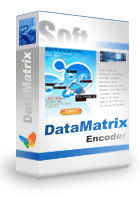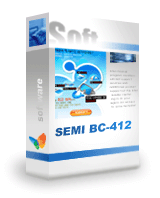Semiconductor industry and back-surface marking on silicon wafers
The Importance of the Semiconductor Industry
The semiconductor industry is a cornerstone of modern technology, driving innovation and advancements across various sectors. Semiconductors are the foundation of electronic devices, enabling everything from smartphones and computers to automotive systems and medical equipment. The global demand for semiconductors continues to grow, fueled by the increasing need for high-performance, energy-efficient, and compact electronic components.
Key Applications of Semiconductors
1. Consumer Electronics: Semiconductors power the devices we use daily, such as smartphones, tablets, and laptops. They enable high-speed processing, efficient power management, and advanced display technologies.
2. Automotive Industry: Modern vehicles rely on semiconductors for advanced driver-assistance systems (ADAS), infotainment systems, and electric vehicle (EV) power management.
3. Healthcare: Semiconductors are crucial in medical devices, enabling precise diagnostics, imaging, and patient monitoring.
4. Industrial Automation: Semiconductors drive the automation of manufacturing processes, improving efficiency and productivity.
5. Renewable Energy: Semiconductors are essential for solar panels, wind turbines, and energy storage systems, contributing to sustainable energy solutions.
The Importance of Back-Surface Marking on Silicon Wafers
Silicon wafers are the fundamental building blocks of semiconductor devices. Back-surface marking on silicon wafers plays a critical role in ensuring the quality, traceability, and efficiency of semiconductor manufacturing processes.
Benefits of Back-Surface Marking
1. Quality Control: Back-surface marking allows for the identification and segregation of defective wafers, ensuring that only high-quality wafers proceed through the manufacturing process. This helps maintain the integrity and reliability of the final semiconductor products.
2. Traceability: Markings on the back surface of silicon wafers enable precise tracking of each wafer throughout the production cycle. This traceability is essential for identifying the origin of wafers, monitoring production stages, and facilitating troubleshooting and quality assurance.
3. Efficiency: Automated marking systems can quickly and accurately apply markings to silicon wafers, reducing the time and effort required for manual identification and tracking. This enhances the overall efficiency of the manufacturing process.
4. Compliance: Back-surface marking helps meet industry standards and regulatory requirements, ensuring that semiconductor products comply with quality and safety guidelines.
Types of Back-Surface Markings
1. Etched Marks: Created using laser ablation, etched marks are typically 12 to 25 microns deep. Known as "hard marks," these permanent markings ensure long-lasting identification.
2. Annealed Marks: Formed by heating the silicon surface to a specific temperature, annealed marks cause slight deformations that result in visible markings. These marks are less invasive but still provide clear identification.
Industry Standards
Several industry standards govern the back-surface marking of silicon wafers:
- SEMI T7: Governs the back-surface marking of double-side polished wafers using a two-dimensional data matrix code.
- SEMI M12 and SEMI M13 0998: Standards for alphanumeric marking of silicon wafers.
- SEMI T1: Governs back-surface BC-412 bar code marking of silicon wafers.
The semiconductor industry is vital for technological advancement and innovation. Back-surface marking on silicon wafers is a crucial aspect of semiconductor manufacturing, ensuring quality control, traceability, and efficiency. By adhering to industry standards and utilizing advanced marking techniques, semiconductor manufacturers can produce high-quality, reliable products that meet the growing demands of the modern world.

Wafer Marking Studio
Wafer Marking Studio enables users to inscribe double-density, triple-density, quadruple-density semi font, semi T7 data matrix, and Semi T1 BC412 symbols on the reverse side of silicon wafers using laser scribers.
Wafer Marking Studio
Semi OCR Font
We provide single density and double density SEMI OCR font and checksum calculation utility.
Semi OCR Font
Semi T7 Data Matrix
Inscribing Semi T7 data matrix code on the back-surface of silicon wafers.
Semi T7 Data Matrix